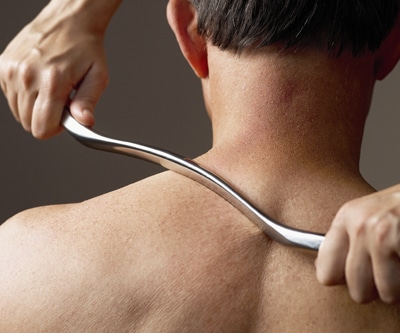Experience Relief with the Graston Technique
While it may seem counterintuitive to purposely cause small amounts of inflammation, the Graston Technique is a proven method for healing damaged muscle tissue. Introduced as a way to alleviate back pain, this technique has helped countless patients return to a normal range of motion and an increased level of comfort.

What is the Graston Technique?
The Graston Technique uses rounded, stainless-steel instruments and massage to detect injuries in muscle tissue. The instruments rub against scar tissue to break it down and rearrange it. The result is a removal of fibrous adhesions, which promotes healing and strengthens the muscle. Temporary inflammation often happens, but is short lived. This inflammation increases blood flow to the affected area to help with healing, to reduce pain, and to increase movement and function.
Benefits of the Graston Technique
Promotes Faster Rehabilitation
One of the best benefits of the Graston Technique is that it works quickly. You should experience some relief within a few treatments.
Increases Range of Motion
This technique activates receptors and nerve fibers in the body to repair muscles and help you move better.
Strengthens Muscle Fibers
Because this technique focuses on the tissues and fibers of the affected area, it helps to not only provide symptomatic relief, but also encourages physiologic changes that help strengthen the injured area.
Can Help Chronic and Acute Pain Issues
The Graston Technique is commonly used to treat and manage both chronic and acute issues. Common conditions include carpal tunnel syndrome, plantar fasciitis, rotator cuff tendinitis, Achilles tendinitis, surgical scar tissue, shin splints, and IT band syndrome.
Frequently Asked Questions
Is the Graston Technique painful?
There are six stainless-steel tools that your chiropractor will use to run over the affected area and identify the problematic tissue. The edges of these tools are rounded, so you don’t have to worry about any poking or prodding. However, some patients have reported minor discomfort and some bruising after the procedure, which should resolve itself quickly.
How often do I need to come in for treatment?
Typically, treatment lasts for about four to five sessions with two treatments per week. You should feel results within the first two sessions.